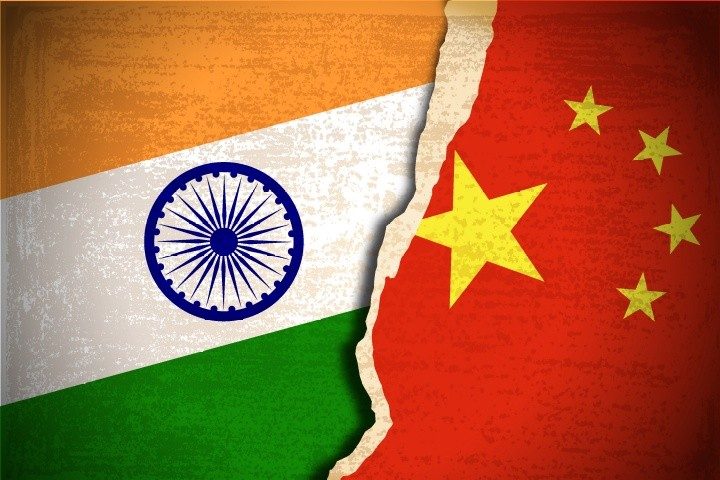
SINGAPORE — Last Friday, Indian and Chinese troops sustained mild injuries in a clash in the Tawang area of India’s Arunachal Pradesh state, the Indian army announced on Monday, the first such episode after the bloody conflict between the two countries in 2020.
India’s Defense Minister Rajnath Singh also confirmed in Parliament that Indian and Chinese troops clashed last Friday.
Indian media reports cited unnamed sources as saying that the episode affected around 300 members of China’s People’s Liberation Army (PLA), and that the Chinese side suffered a greater number of injuries — claims Beijing has not refuted or acknowledged.
Singh said Indian troops suffered no fatalities or serious injuries.
Arunachal Pradesh is situated on India’s eastern tip and shares a border with China.
“Both sides immediately disengaged from the area,” the army said, elaborating that its commander in the area held a meeting with his Chinese counterpart after the incident.
An Indian foreign ministry spokesperson did not respond to a request for comment, while a defense spokesperson declined to comment on injuries suffered by Indian or Chinese soldiers during the clash.
The Chinese foreign ministry and its embassy in New Delhi remained silent as well on the issue.
The disputed 2,300-mile frontier between the two large countries has remained generally peaceful since a war in 1962, before the 2020 clashes caused relations to plummet.
In June 2020, Indian and Chinese troops were embroiled in a hand-to-hand combat in the Galwan Valley of Ladakh, adjacent to the Chinese-held Tibetan plateau.
The 2020 incident caused the death of 20 Indian soldiers and an unannounced number of casualties on the Chinese side. Subsequently, the two sides agreed to cease hostile activities in the contested area along the Himalayan border in September this year.
It took over two years and 16 rounds of military talks to tackle most of the points of contention, including Pangong Tso, a cross-border Himalayan lake. Discussions are underway to disengage from the remaining friction points.
Indian Army chief Manoj Pande said in a recent talk that ensuring a “higher level of operational preparedness at all times” and the significance of infrastructure development for rapid troop mobilization were lessons learned from 2020.
For a long time, troops on both sides have had protocols in order to steer clear of firearms along the de facto border called the Line of Actual Control.
Meanwhile, India lashed out last week at China for trying to “unilaterally change the status quo” on the border.
“PLA troops attempted to unilaterally change the status quo by encroaching on the Line of Actual Control, in the Yangtse area of Tawang sector,” Singh said.
“Our army faced this attempt by China with firmness. A scuffle ensued in this face-off,” he added. “The Indian army bravely prevented the PLA from encroaching on our territory, and forced them to withdraw to their posts. Some soldiers from both sides were injured in the skirmish.”
“The Chinese side was asked to refrain from such actions and maintain peace and tranquility along the border. The issue has also been taken up with the Chinese side through diplomatic channels,” Singh said.
China’s foreign ministry spokesman Wang Wenbin did not comment on the supposed clash on Tuesday, assuring reporters “as far as we understand, the China-India border situation is stable overall.”
“Both sides have throughout maintained unobstructed dialogue on the border issue through diplomatic and military channels. It is hoped that the Indian side will advance in the same direction as China,” he added.
Beijing encouraged New Delhi to “earnestly implement the important consensus reached by both leaders, strictly abide by the spirit of the agreements and accords signed by both sides, and together uphold the peace and tranquility of the China-India border region.”
India’s Foreign Minister Subrahmanyam Jaishankar declared in Parliament last week, before the most recent face-off, that bilateral relations with China could only revert back to normal with peace on the border.
Earlier in December, the Indian government decided to proceed with the construction of a 1,200-mile highway in Arunachal Pradesh.
China has always claimed the total area of the state as being part of south Tibet.
Known as the Arunachal Frontier Highway, the road, which is supposed to assist the military to transport troops and weapons rapidly to the border, will cost 400 billion rupees ($4.8 billion), according to Indian media.
It traverses some of the remotest areas, with a government official earlier calling it “one of the toughest and biggest border road projects” in the country.
The road is expected to complement other ongoing projects for quicker troop mobilization.
The Sela Tunnel, which is being built at an altitude of nearly 13,000 feet and will provide easier access to Tawang, is expected to be completed in 2023.
China is especially alert to events in Tawang due to the monastery there, and has opposed visits there by the Dalai Lama.
In November, the government set aside 1.6 trillion rupees ($19.4 billion) for constructing roads in the northeast, including 440 billion rupees ($5.3 billion) for Arunachal Pradesh.
Since 2020, India has approved 32 roads along the entire border, in addition to upgrading and constructing 32 helipads, based on a recent parliamentary panel report.
India’s long-standing policy for years was to keep the border areas unreachable to slow down any Chinese incursions. Although that policy was altered considerably before 2020, China had already begun to construct railroads, a highway network and even an oil pipeline all the way to the border.
Indian analysts pointed out that India also had different challenges from China.
“There is an inherent issue in comparing Indian and Chinese problems with the infrastructure along the border. The problem relates to the terrain. It comprises high mountains on the Indian side and the Tibetan plateau on the Chinese side. The Chinese found it much easier to build their highway network in Tibet, as well as a rail line and an oil pipeline,” said Manoj Joshi, distinguished fellow at the Observer Research Foundation, a New Delhi-based think-tank.
“On the Indian side, the going was tough, but the roads have now come up in almost all the sectors…. India is now … building tunnels to make its roads accessible even during winter.”
However, China has persisted in reinforcing positions at the border’s vital junctures, based on a 2021 U.S. Department of Defense report and satellite imagery.



